Roger J. Wendell
Defending 3.8 Billion Years of Organic EvolutionSM


Morse Code
A Tribute to Morse Telegraphy!
Here's me using a hand key at Port Lockroy, Antarctica! Above the hand key is a Marconi
CR100 Receiver and in the lower right is an AvoMeter Model 7 Mk. II (20k Ohms per Volt)
(G7VAK helped me ID the gear, Tnx!)

|
Click Here for my page about low power amateur radio! |

|
Click Here for my page about antennas! |

|
Click Here for an Extra Class lament! |
Love!
Here's me at Jim Moravec's Star Haven observatory for CQC's Field Day effortOkay, allow me start off by expressing my bias: I LOVE MORSE CODE! (Even when I'm writing things like this on my computer, I'm listening to live Morse code on the Ham bands...) To me, Morse code (Often referred to as CW, for "continuous wave", when used over radio) is fun, easy, and at times even musical. There's no doubt that Morse code is the original "digital" communications mode. And, although it's not as popular as it used to be, I can guarantee you that it's going to be around for years to come - just listen to the ham bands and hear for yourself!
How I got started:
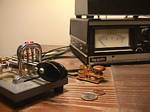
My earliest memories of my father are of him listening to the AM radio each morning before work, and shortwave radio as time permitted. Although our family was of limited means, he was able to acquire a "classic" shortwave receiver (who's manufacturer escapes me at this time) that was housed in a finally crafter wooden cabinet. I distinctly remember, When I was 5, my father carefully explaining radio waves to me when I asked him why we could still hear the car radio even though we were away from the power lines!
At about age ten or 11, in the mid 60s, with my father's help I hand-wound a great length of enameled wire (probably 20 gauge but I don't recall for sure...) around a nail sticking up from a flat piece of wooden board that was half the length of my forearm. About a half centimetre above the nail's head hovered a cut piece of tin can that I anchored to the board in a "Z" shape to form what I thought, at the time, was a typical telegraph sounder. By touching the wire ends to a common "D" cell battery I was able create a magnetic field that pulled the piece of tin down to the head of the nail to make a loud clicking noise. The grade school I was in at the time had me parade the device around "campus" for the benefit of my classmates. Unfortunately, I had no knowledge of Morse code at that time and, even worse, didn't think to take any photographs of the device but am thankful my father provided a lot of guidance (and tin from his beer can, as the teacher noted!) for the project.
Eventually, when I put my mind to it, I found Morse code to be very easy to learn. During junior high school (circa 1969) some friends and I were experimenting with all types of codes and ciphers, just for the fun of it (the wood and wire from the aforementioned sounder having long since been used for some other project). Looking through my parents' dictionary I found Morse code and thoroughly memorized the entire alphabet in about an hour. A week later I was proficient enough to pass both a receiving and sending test at a solid 5 words per minute in Mr. Manley's (Later I learned his call sign was W6LDT) science class.From there it was pure joy - I earned my "Ham" (amateur radio) license and was on the air using Morse code every chance I could get. Friends and I experimented with all types of keys, "bugs," and keyers. In fact, I even constructed an electronic keyer made out of vacuum tubes! Nowadays, of course, the entire electronic keyer fits on a small chip while many people even send and receive Morse with their keyboards and computers.
Morse code and the United States Coast Guard:
My Ham radio experience paid off in that the United States Coast Guard eagerly accepted me at their Petaluma, California Radioman "A" School in 1975. Radioman School was an intensive 5 months of study covering everything from teletype and maritime radio procedure to Morse code and search and rescue communications. Unfortunately, the course work was a bit difficult, resulting in a washout rate of over 50% of my classmates.
Luckily, my love for Morse code pulled me through not only the 5 months of training, but I broke the Coast Guard's record for receiving Morse code as well. At the time I was receiving well over 40 words per minute in either plain text, or 5-character coded groups, with an accuracy rate of 99%. That record still stands and unfortunately will never be broken since the Coast Guard officially ended its use of Morse code in the late 90s.
Anyway, you and I can STILL enjoy Morse code on the Ham bands and even on the Internet at times. Obtaining a Ham license is pretty straight forward and offers all kinds of great experiences and friendships. A good place to learn more about earning a license is the American Radio Relay League (ARRL). The ARRL web site is at: http://www.arrl.org
Also, feel free to contact me anytime about Ham Radio and Morse code - I love doing and talking about them both!
72s es 73s!
Roger, WBØJNR


|
Click Here for my page about QRPp low power operating! |


|
Click Here for "Q" and "Z" signals |
|
|
Click on this hand key to hear real Morse code! (227k .wav file) |

|
Click Here for Morse code memories from telegraphers |

A brief history of Morse code
Samuel F. B. Morse (1791-1872) conceived the idea of radio telegraph while returning on a ship from Europe in 1832. After a number of electrical experiments Morse was able to demonstrate a working telegraph set in 1836. It was with the invention of the American Morse code that the historic message, "What hath God wrought?" was sucessfully sent from Washington to Baltimore.
In honor of the 218th birthday of Samuel F.B. Morse,
Google's main page prominently featured these Morse
code characters for the entire day on April 27, 2009!
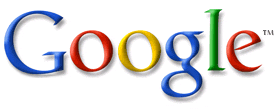
|
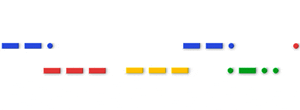
|
Morse's Contributions to the World
My Elecraft K1 with a J38 military key
and the Morse Express Chirstmas keyby Garrett Wendell, 8th grade
Mrs. Johnson's Period 3 class
May 2012
Samuel F. B. Morse made a lasting difference in the world. Morse was born on April 27, 1791 and died on the April 2, 1872. Samuel Morse lived to be 81 years old. He was a professional painter and an inventor in America during the 1830's. He was an inventor because he needed to support himself to buy painting supplies. Morse abandoned painting to fully focus on the telegraph, most likely because of his failure to get a commission to paint the Rotunda of the Capitol building in 1836 (Smith). Samuel F. B. Morse changed the way people fought wars by making communications available to the front lines, using telegraphs, in the 1800's, and we still use the dots and dashes in Morse code to communicate today.Works CitedSamuel F.B. Morse worked very hard and had different ways to support himself as a professional artist, which was his dream. Some of his ideas were the invention of a pump for fire engines, a machine that could replicate marble statues, and the telegraph. His most famous idea wasn't the telegraph but the Morse code for the telegraph. Morse code is a code of dots and dashes that are interpreted into the alphabet. And in Morse's case, these signals were sent over the telegraph using electronic pulses. Morse couldn't completely focus on the telegraph because he was a university professor at Yale with little time and money. He made his first telegraph, which was built very poorly, out of art equipment and parts of a clock. The crude telegraph couldn't send a signal farther then 40 feet.
Since Morse didn't have a very good scientific background and mechanical skills, he hired Leonard Gale, a chemistry teacher at University of New York (Hochfelder). Gale told Morse to use Joseph Henry's design because Henry developed the electromagnets used for longer distance communications for the telegraph (Bellis). Morse and Gale built a electromagnetic telegraph together that could send messages 10 miles instead of Morse's 40 feet. Alfred Vail, a professional mechanic who had his own machine shop, gave funds and assistance to Morse (Hochfelder). Without Gale's help or Alfred Vail's funds, Morse couldn't have created a successful telegraph.
The telegraph was very important and vital for the military. This advanced machine was first used in the military at Varna, Bulgaria, during the Crimean War, in 1854 by the British and French. It was also used by both the North and the South in the American Civil War, where commanders could quickly deploy men and supplies to the weaker front lines. Their units could also report back what the outcome of their battles were. The Spanish-American War first used the telegraph for newspaper reporters in 1847 (Smith). The telegraph played a key role in wars.
There was a down side to use the telegraph in the military. There was a injury called "brasspounding" also known as "glass arm". It came from moving the up and down key too much and caused a repetitive strain injury. To solve this problem, J. H. Bunnell invented the "sideswiper" or also known as the "bug key". Instead of the up and down motion the sideswiper would go side to side. The most famous version of the sideswiper is called the Vibroplex (Christian).
America and European countries sought a goal to establish communications with each other. After three failed tries to connect overseas, they finally connected on their fourth try on August 16, 1858. This was the first transatlantic cable ever built. The first transatlantic cable message was sent from Queen Victoria, in Great Britain, to President Buchanan, in the U.S. However, while this fourth attempt to connect the 2 countries worked, it stopped working less than a month later after its completion. It sent a total of 732 messages during that time period (Burns). Soon after, the cable was repaired and back in the water, fully functioning and operational. About a hundred thousand miles of undersea telegraph cables have been laid by 1880 (Burns). That's enough cable to go from the North pole to the South pole and back, 50 times! On September 1, 1858, the governments of ten European countries congratulated Morse with four hundred thousand French francs or four hundred twenty four thousand American dollars for his invention of the telegraph (Samuel F.B. Morse biography). America and Britain achieved peace and prosperity by Morse's discovery.
Samuel F. B. Morse revolutionized communication on the battlefield and he made communications faster and easier. Samuel Morse was a talented artist and an important inventor to America. Morse expanded business careers and brought peace to the U.S. and other countries with the invention of Morse code.

Okay, who was the fastest code operator, ever??
I put that question to my friend Marshall Emm, N1FN, who runs
Morse Express, the world's best key and keyer shop. Marshall provided,
from memory, some tidbits from the Theodore McElroy legend:"Ted McElroy started manufacturing keys in 1934. McElroy was a master of both American and International Morse code and he promoted telegraphy most of his life, first as a telegrapher and later as a manufacturer of keys, bugs, and related equipment.
"By age 15, McElroy was a leading telegrapher (Wirechief) for Western Union. In 1922, he won the world championship in Asheville, NC by copying code at 56.5 WPM. That record was beaten in 1934. So, he went back the following year (1935) and beat the world record again. On July 2, 1939, McElroy broke the world record code speed at 75.2 WPM, which remains unsurpassed today. For the record, there is an individual ham radio operator who claims to have beaten it, on the basis that 75.2 wpm in 1939 currency is only worth about 65 wpm today.
"Anyone considering the nature of the record should recognize that the 1939 contest was a PROGRESSIVE test, with around a dozen candidates, but only two surviving to the final round. Each round consisted of a 15 minute transmission of text from a newspaper. Speed calculation was about as scientific as you could get-- they cranked up the speed a couple notches, and at the end of the 15 minutes they counted how many words had been sent.
"Hams struggle with 5 minute tests (in which they only have to have solid copy for ONE minute!), and the two finalists in the 1939 test had to survive multiple, consecutive 15 minute tests at ever increasing speeds.
"The legend is that Mac astounded the audience by not doing anything when the sending started-- except to take a drink of water, and light a cigarette. He didn't start typing until a full 15 seconds of code had gone by. When the tape finished, he kept typing for that same 15 seconds. And it's no coincidence that he also won touch typing contests! Ever the showman, Ted "Mac" McElroy put his name and "World's Champion Radio Telegrapher" on his keys and bugs, which are highly prized today by discriminating operators and collectors."
73
Marshall Emm
N1FN/VK5FN

[ed note: On February 12, 2009 Marshall and I were discussing the Morse issue and he
reminded me that the code requirement, for U.S. hams, ended in early 2007...]

Morse code on Mars!
Curiosity, the 2,000 pound rover that was set on the surface of Mars during the summer of 2012, holds a mind-boggling array of scientific, photographic, and communications equipment. What you may not know is that Curiosity's wheels have holes in them that leave the Morse code letters "JPL" imprinted in the ground! In addition to a bit of fun and vanity, these holes allow NASA scientists to know the exact spacing between those marks in the soil - any differences indicating slippage.

Fun Stuff!
|
|
Remember "QLF," the old (unofficial) Q signal complaining that an operator was sending Morse code so poorly it sounded like it was being sent with the op's left foot? Well, during the Colorado QRP Club's 1999 picnic an actual "QLF" contest was held and captured on video! See and hear this "historic" event at: http://www.coloradoqrpclub.org/gallery/picnic99/index.htm!!! |
David Ring
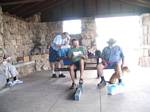
|
Okay, here's me attempting the same thing at the Colorado QRP Club's annual picnic in 2004 (Here's their page) That's N1FN grading me, in the back, with NFØZ at my side... |
Jay Leno
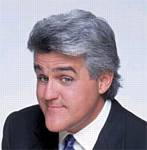
On Friday evening, May 13, 2005, Jay Leno sponsored a Text Messaging vs Morse Code "Shoot Out" on the Tonight Show: Click Here for the 8 mb high-resloution video clip
Click Here for the 1.3 mb low-resloution video clip
Morse vs text messaging!

Johnny Cash

On March 12, 2005 we held our annual "Key Day" at
the Colorado QRP Club. Here's a small sampling of
the photos I took of the wide variety of interesting
keys and paddles folks brought to the meeting:

|

|
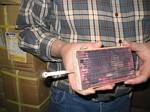
|
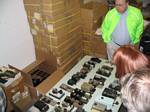
|
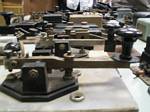
|

Braggin' Rights:
Who holds the Coast Guard's record for receiving Morse code? - ME!Coast Guard 40 wpm certificate.
Armed Forces Day 25 wpm certificate.
ARRL 20 wpm certificate.
Ex - WN6CDA, at age 14, 1970
Ex - KH6JDO, Wahiawa, Oahu 1976
Amateur Extra Class license since June 1982
General Radiotelephone license since August 1990
Restricted Radiotelephone Operator Permit since 1995
WN6CDA circa 1971
(I learned the code at age 14
by memorizing it out of a dictionary!)
WBØJNR circa 2012
40 years later wearing an
ORARI (Indonesia) radio club shirt!Click on this hand key to hear real Morse code! (227k .wav file)
Coast Guard Speed Key Certificate Front
Coast Guard Speed Key Certificate Back
For some Morse code "Music," try sending this character sequence: BEST BENT WIRE /5
If you put a little "rhythm" into your sending the sound is, indeed, rather musical!!

ZUT
Coast Guard CW Operators Association
Member # 1363
ZUT was the unofficial Coast Guard signal for "CW (Morse code) Forever!"
Click on these "Thumbnails" for a larger view:
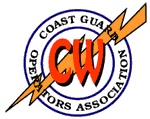

Membership Card
Membership Certificate

Sadness:
The ARRL ran this front page headline on its website in January, 2007:"It's Official! Morse Code Requirement Ends Friday, February 23 (Jan 24, 2007 [REVISED Jan 26, 2007 14:15 ET]) -- Circle Friday, February 23, on your calendar. That's when the current 5 WPM Morse code requirement will officially disappear from the Amateur Radio Service Part 97 rules in accordance with the FCC's Report and Order (R&O) in the "Morse code proceeding," WT Docket 05-235. Beginning on that date, applicants for a General or Amateur Extra class Amateur Radio license no longer will have to demonstrate proficiency in Morse code. They'll just have to pass the applicable written examination. Publication of the new rules in the January 24 Federal Register started a 30-day countdown for the new rules to become effective. Deletion of the Morse requirement -- still a matter of controversy within the amateur community -- is a landmark in Amateur Radio history."
The ARRL had this to say on page 9 of the February '07 edition of QST:
"Late in the day on Friday, December 15, 2006 the FCC took a step that had been long desired by some and long dreaded by other, but long expected by everyone who cared either way. An FCC news release issued that same evening announced the Commission's decision to eliminate the Morse code examination requirement for the General and Amateur Extra Class licenses." ARRL Chief Executive Office David Sumner, K1ZZ, wrote; "The best reason for developing Morse proficiency is that it makes Amateur Radio more rewarding and more fun. If one's sole motivation for learning Morse is to get past a 5-wpm exam, it's unlikely to be either rewarding or fun - or ever to result in real fluency. If on the other hand the driving force is a real desire to use CW on the air - a desire that those of us who love CW can supply - then that's a horse of a very differnt hue."
In the early 80s I saw it coming:
This letter was one of my earlier attempts at convincing the FCC to keep Morse code as an amateur radio requirement...
(Okay, it was 1983, I was young, full of myself, and typewriters didn't have grammar and spell checkers!)
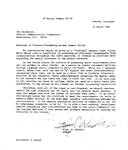
PR Docket Number 83-28
Aurora, Colorado 80015
21 March 1983
The Secretary
Federal Communications Commission
Washington, D.C. 20554
Response to Proposed Rulemaking Docket Number 83-28:
No consideration should be given to a "codeless amateur radio license. While Morse code is beneficial in providing an efficient, inexpensive form of communications throughout the radio spectrum, it remains an excellent method of expanding the mental processes of the person involved.In the United States the effects of lessening entry requirements have been all too evident in other fields. As a nation we remain extremely deficient in foreign language skills compared to world citizenry. While not a language in itself, Morse code, with the use of "Q" signals and other internationally recognized shorthand, can be used a vital link in bridging linguistic barriers on any frequency, while simultaneously enhancing the mental capacity of the operator who has taken time to learn the code. It is very similar to the calculus you learn in college, while not used on a daily basis after graduation, it has helped us all expand our thought processing capabilities.
Therefore, will all of the vigor at our disposal, we should continue to uphold the high standards set for entry into the Amateur Radio Service. We've seen the damage done with the advent of citizens band radio - if an intelligent, disciplined person has the fortitude to meet the requirements for entry into the Amateur Radio Service, he can then make valuable contributions through his participation. If the amateur population declines in number due to our refusal to compromise standards, so be it. It is with a hard working, intelligent amateur population that contributions are made to the world community, not with the average American of this decade who attempts mediocrity by tearing down obstacles to his leisure.
[signed] Enclosure: 5 Copies
Roger J. Wendell
WBØJNR

|
Click Here for N1FN's (Marshall G. Emm) Funny Noises Morse code requirements article... |

Links:
|
|

 Back to Roger J. Wendell's Home Page...
Back to Roger J. Wendell's Home Page...
Abbey |
About |
Blog |
Contacting
Me |
Copyright |
Disclaimer |
Donate |
Guest
Book |
Home |
Links |
Site
Index |
Solutions |
Terms,
Conditions
and
Fair
Use |
What's
Changed
or
New?
Copyright
© 1955 -